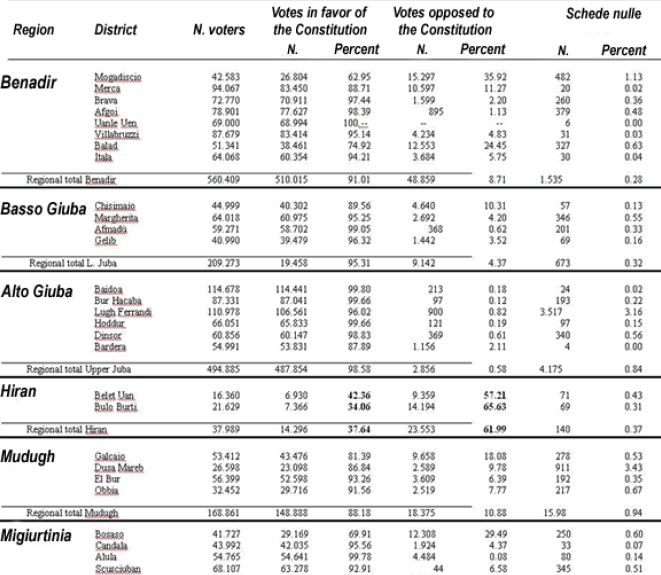Why Somaliland Doesn’t Matter: In Response to the Article “Why Somaliland Matters”
UNCATEGORIZED
by FPA Administrator | on June 19th, 2012 | 23 Comments

Photo Credit: Retlaw Snellac via Flickr, CC License, some rights reserved.
By Osman Elmi
The following is a guest post response to the article “Sustainable Peace: Why Somaliland Matters” by Abukar Arman.
Northern Somalia, “Somaliland,” was a Protectorate, not a Colony
Before the arrival of Britain, the people and lands which became Somaliland Protectorate in the late 19th century were traditionally divided into clans and their territories. Each clan was separate and independent from the other. Chiefs, Sultans, Grads, and Ugases administered the civil and judicial matters inside and outside clans.
During the British protectorate rule, each clan maintained its internal administration, and the United Kingdom recognized each clan area as a separately protected people and territory. That was because the clan treaties defined land boundaries and people. This means that neither the British nor the clans were interested in the creation of a unitary state of Somalis in the North. At no point in their long history did the northerners agree to form a unitary state.
The United Kingdom worked with each clan through the chiefs and in accordance with the terms of an agreement. The major treaty that ever existed in documented form was that signed in Zeila by the, Samaroon King on 11 December 1884. That popular treaty is known as the Gadabursi treaty and it defined the lands and the people to be protected.
Liberation and Independence
In the middle of liberation campaign, the different clans did not agree on how to share the proposed 33 parliamentary (legislative) seats. 21 out of the 33 were located in the constituency of one clan, the Isaaq. Samaroon adamantly rejected the plan, and, in that case, Samaroon’s political vision matched the system of checks and balances used by today’s modern democracies. Checks and balances is a transparent administrative rule that denies empowering one side against others. Today, in the United States, the executive, the legislature, and the judiciary branches are a constant check on one another.
Samaroon began to fight the injustice, and the leaders started their historic journey to Lasanod, the eastern end of Somaliland Protectorate. The purpose was to recruit alliances against the constituency plan. They were successful in forming the United Somali Party (USP) for the Samaroon, the Issa, and the Darood clans on 17 October 1959.
The USP clans and others who feared for their future, formed a strong pressure block. Large groups from the Isaaq tribes sided with the USP policy. That power share disagreement fundamentally forced the Northerners to join Southern people.
The fact is that clan treaties with British were automatically annulled by the onset of independence declaration. After that, different clans could not agree in the balance of seats and decided to form a bigger government with the South. The blue flag was always the unifying factor in all Somalia, and “Somaliland” never stood as a separate state.
On 1 July 1960, the unification that took place in Mogadishu was between the two peoples of the North and South and not between two governments. The Northern delegation was fairly selected in their representation. They were Haji Ibrahim Nur (Samaroon), Ali Grad Jama (Darod), Mohmed Haji Ibrahim Egal (Isaaq), and Ahmed Haji Duale (Isaaq). One year later, the national constitution was completed by an all inclusive Somali committee with the help of United Nations experts. A date was set on 20 June 1961 to put the constitution on a referendum throughout the country. An absolute majority of 90% of the electors voted in favor of the new constitution. That was the first constitutional and internationally recognized Somali Republic state and was recognized by the United Nations on 20 September 1961.
The Basic Facts
Today, after 62 years, the Isaaq clan “Somaliland” is attempting to play a long-dead card that Northern clans buried within five days after the British left in June 1960. Today, the northerners are back to square one–that of 1960 tribal rivalry. One clan is attempting to highjack the destiny of the people. We are, therefore, warning the international community that the so-called Somaliland one clan authority has no mandate to speak for other people in the north.
The Civil War Years
In the 1980s, twenty years after independence, Somalis revolted against their government. Clans were equally unhappy about the system but had their own ideological and interest differences. In this region, the unresolved issue of power sharing in 1960 emerged on the surface again when the Isaaq clan founded their rebel movement–the Somali National Movement (SNM). Other clans–particularly the Samaroon elite–cautiously tried to follow the SNM agenda and realized that SNM was not ready to correct the 1960 power share disagreement. Since it did not invite other clans, the SNM’s objective in that war was to capture the whole north and dictate the destiny of the country. That is exactly what the Somaliland authority is doing today. In their fight, SNM leaders used irresponsible strategic propaganda to generate financial contributions and to unite their people behind their agenda. For that purpose, they pointed finger at the neighboring clans as enemies. The aim was to touch deep into their people’s sentiments and show that all people were against them.


 . They're saying somehow every person in the south voted even though most of the people were nomads.
. They're saying somehow every person in the south voted even though most of the people were nomads.